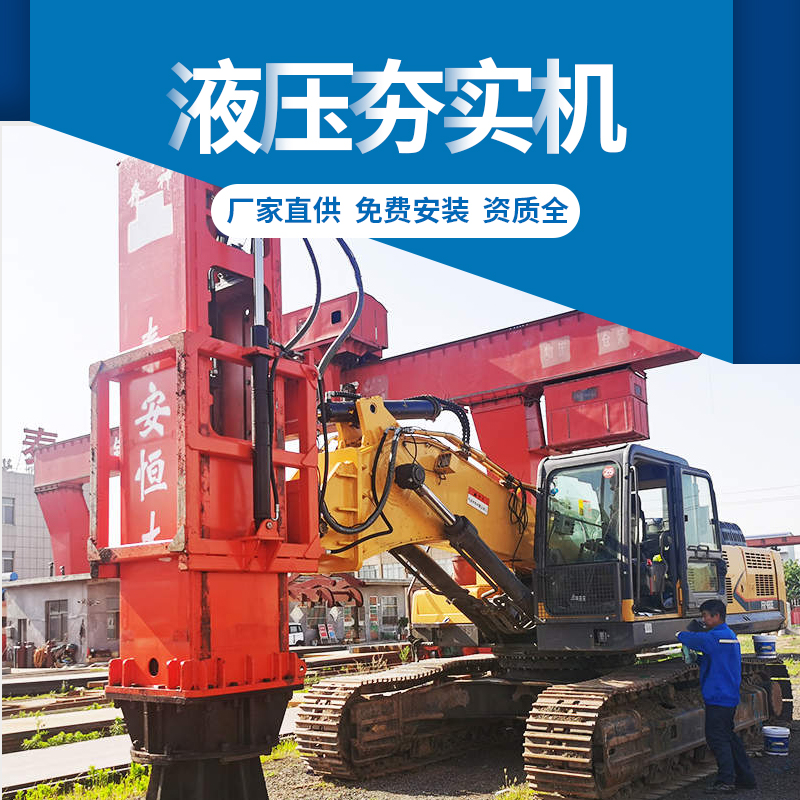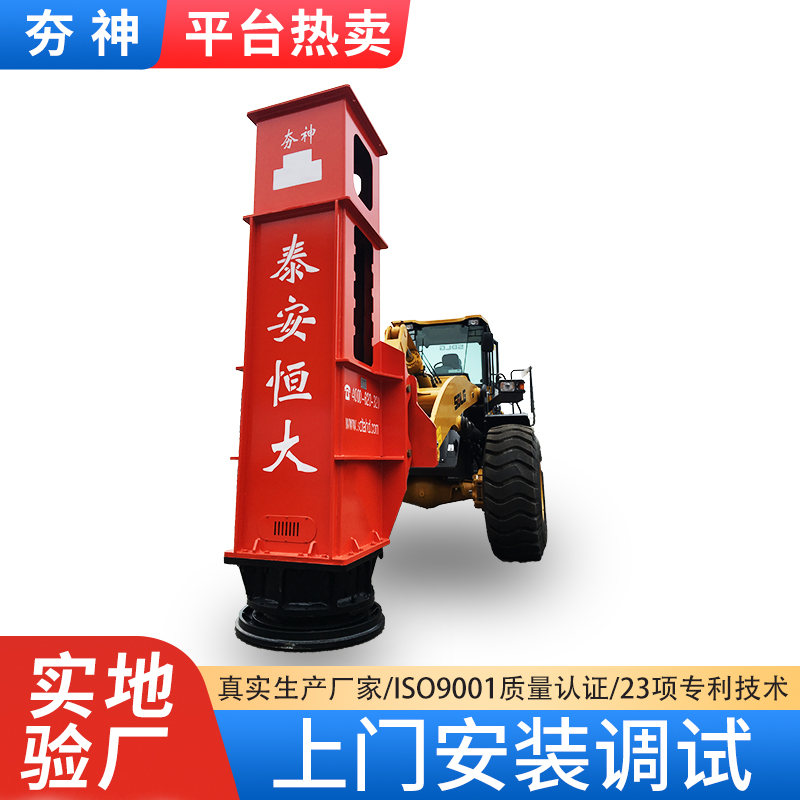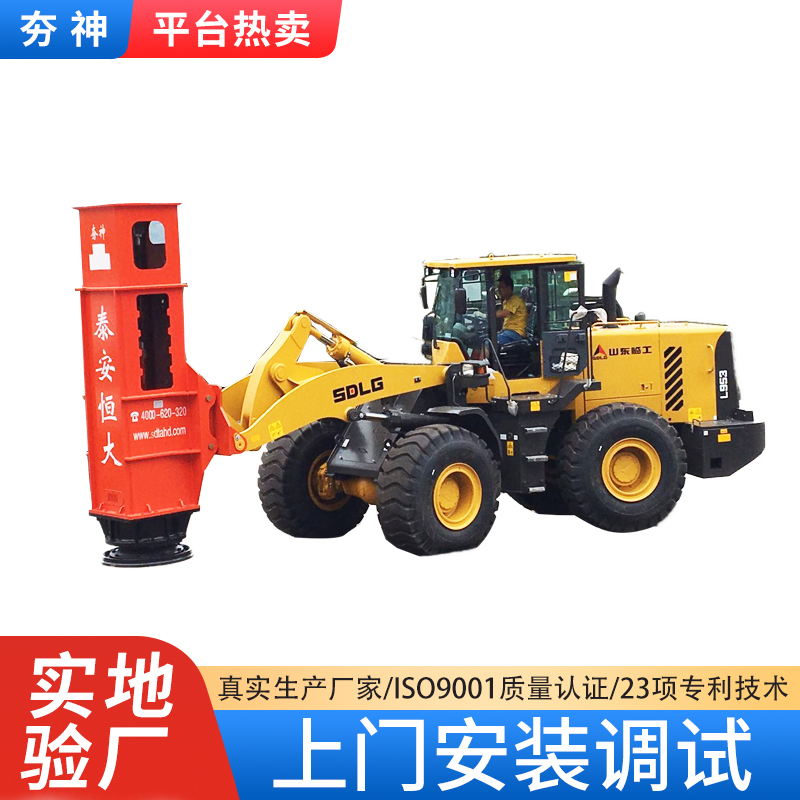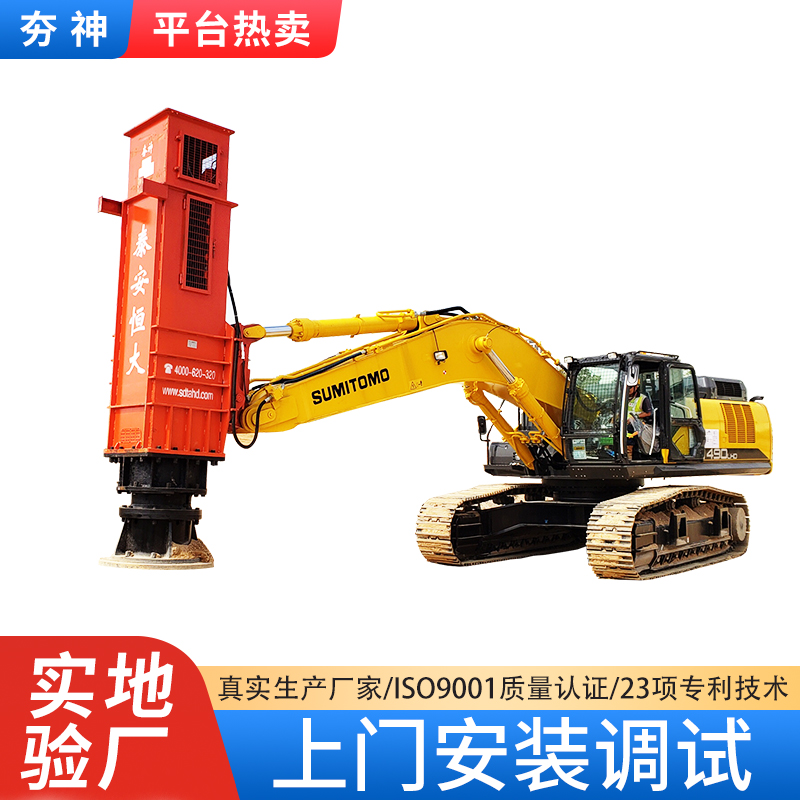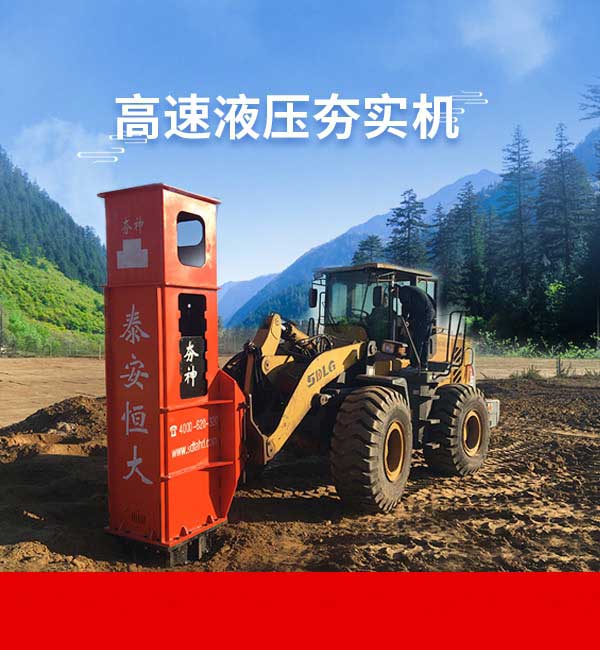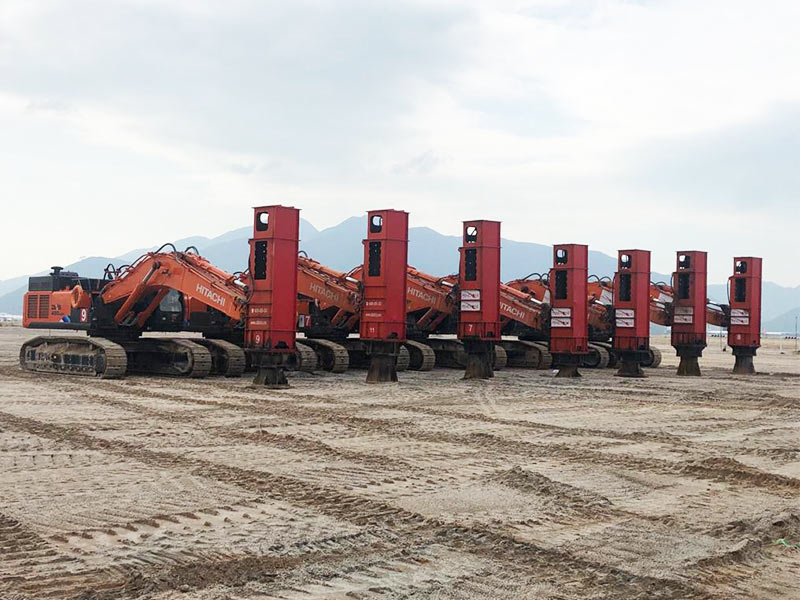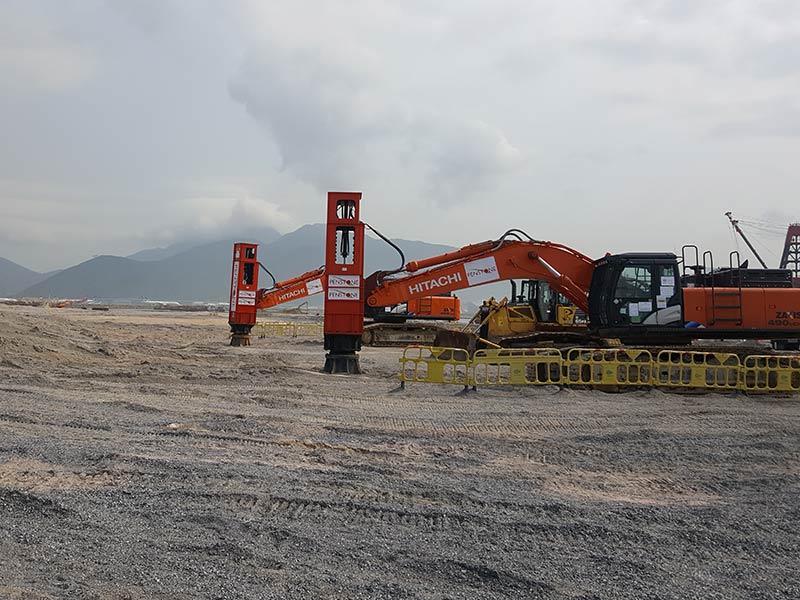RIC is a process where loose subsurface soils are improved using an excavator-mounted 7.5 ton hydraulic hammer. The hammer is rapidly raised and lowered onto a 1m diameter plate, which densifies the soil, in-place, without the need for undercut and replace. The average compaction point is hit 40-90 per minute.
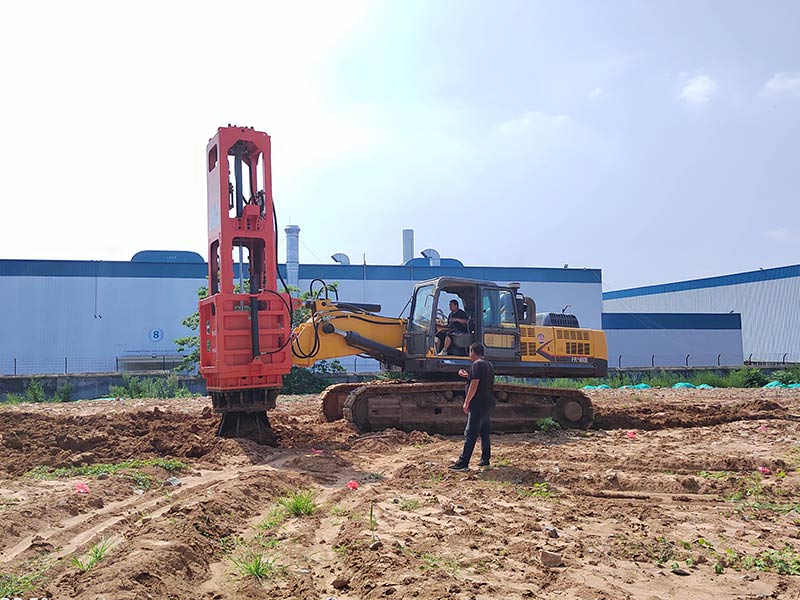
RIC increases the stiffness and shear strength of soils through the use of impact compaction effort. Specific benefits include:
Increases Standard Penetration Resistance – the standard penetration resistance (N-Values) of loose granular soil can increase significantly. In developing an RIC specification for a project the minimum target blow count for the performance required should be specified.
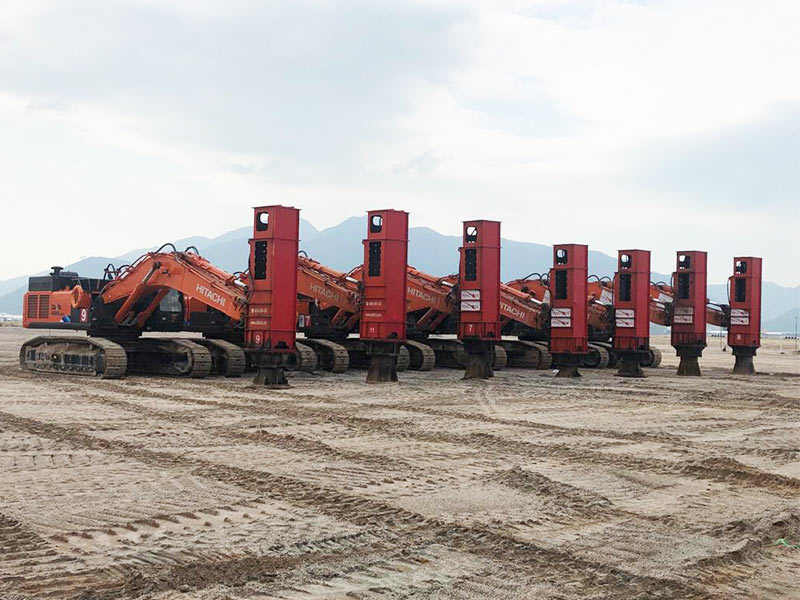
One advantage of RIC is that the drop height and number of blows can be varied based on the soil conditions. Through a test program, we will work with the Geotechnical Engineer of Record (GER) to determine the appropriate improvement criteria and RIC set-up for various areas of the site. For a site with a mixed soil profile and varying thicknesses of sand and clay, the ability to accurately control the amount of energy delivered to the ground is critical as it allows one to improve the loose overlying loose soil without liquefying the fine grained soils below – providing more uniform compaction.
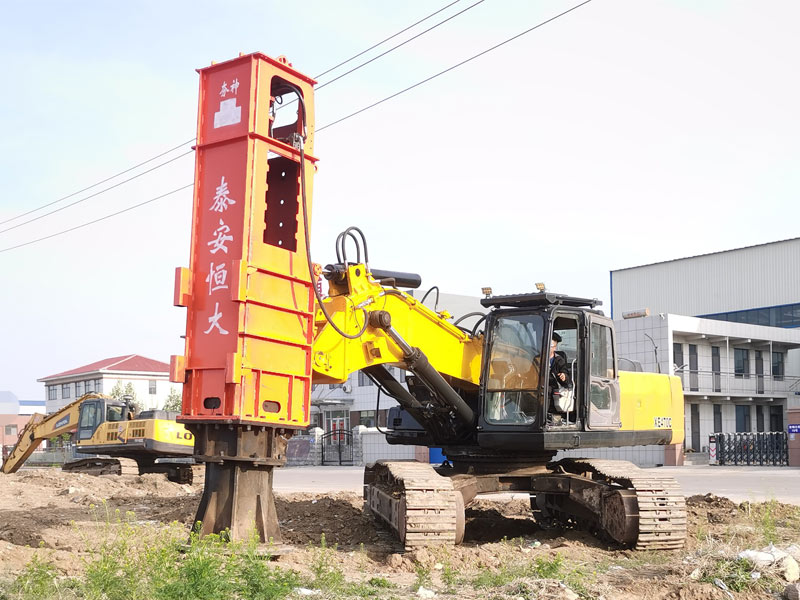
The RIC compactor is mounted on a excavator so that moving around the site is easy. The compactor consists of a 7.5-ton weight falling approximately 36 inches onto an anvil in contact with the ground at a rate of approximately 40-90 blows per minute thereby compacting approximately 800 sf of area per hour. Onboard diagnostics equipment allows the compaction effort to be stopped when optimum compaction has been achieved.
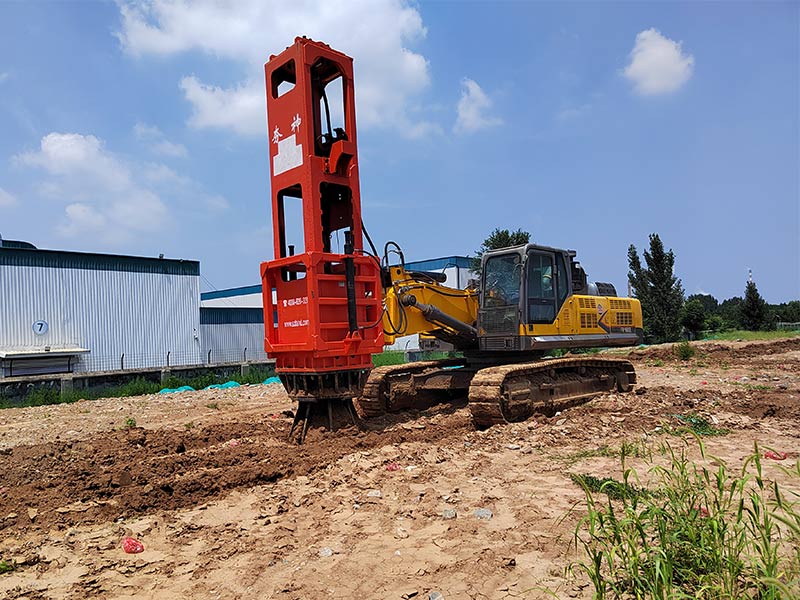
Rapid Impact Compaction (RIC) is a ground improvement technique that densifies shallow, loose and, granular soils. Soil treated by this method results in increased density, friction angle, and overall stiffness, which results in increased bearing capacity and decreased settlement of planned structures. Rapid Impact Compaction consists of an excavator-mounted, hydraulic pile-driving hammer repeatedly striking a circular plate that rests on the ground. Energy is then transferred to the ground safely and efficiently, as the RIC’s foot remains in contact with the ground, which avoids concern over flying debris being ejected. Rapid Impact Compaction densifies loose-fill soils of up to 6 m deep or more. Additional benefits of rapid compaction include: an increase of the bearing capacity of the soils, minimization of settlement, and the creation of uniform support for foundation footing. Rapid Impact Compaction is an innovative solution when compared to the time and cost of over-excavation and re-compaction.
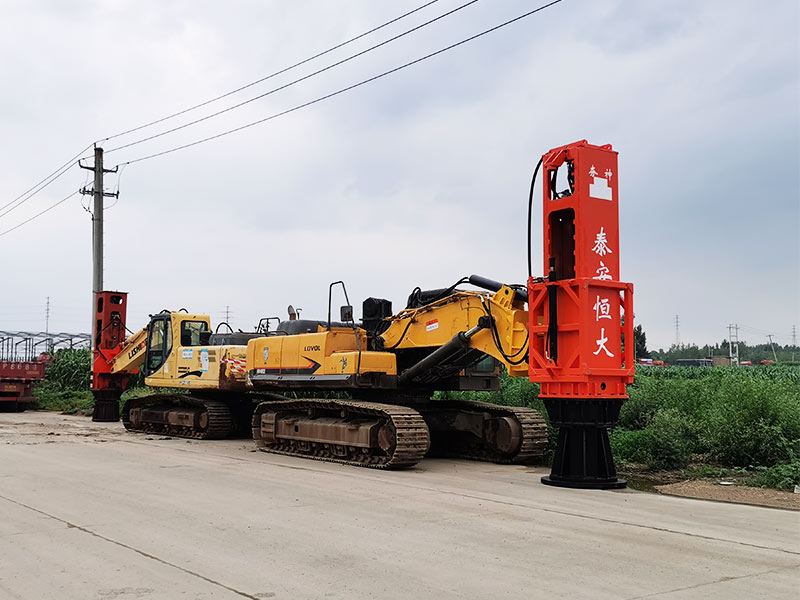
RIC is a high-frequency, controlled energy, soil compaction technique used to densify surface layers of soils (to a depth of 5 to 7 meters in most cases) with minimum impact on the immediate worksite environment. Rapid Impact Compaction is widely used to densify loose granular soils (sand or gravel) as well as loam fill and industrial brownfield sites for surface compaction, foundations and floor slab support, liquefaction mitigation and waste stabilisation.

 Current Position:
Current Position: 